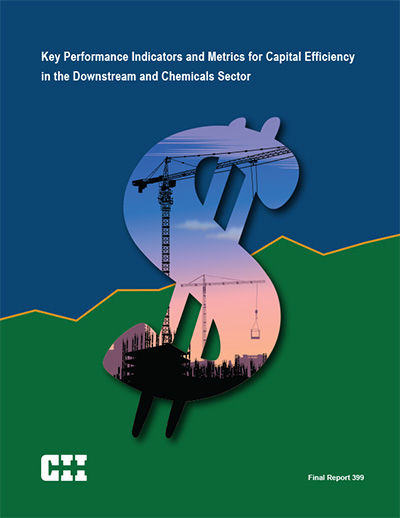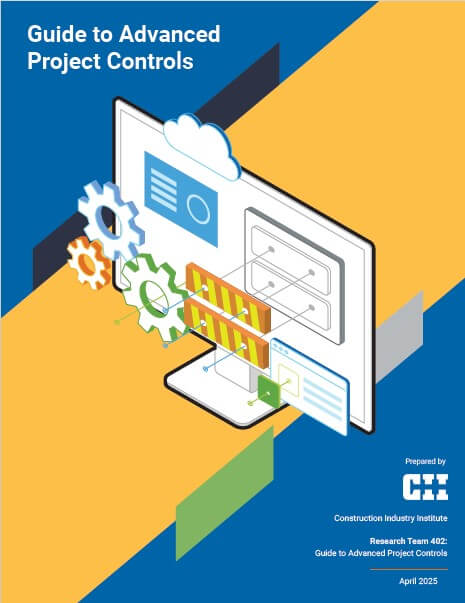
Key Performance Indicators and Metrics for Capital Efficiency in the Downstream and Chemicals Sector
The Downstream and Chemicals Sector Committee (DCC) of the Construction Industry Institute (CII) developed a research roadmap to help participants in its sector enhance their productivity and improve capital efficiency by implementing best practices as well as by leveraging technological and contractual advances. Parallel to this effort, CII commissioned Research Team 399 (RT-399), Defining Capital Efficiency Metrics for Downstream and Chemicals Projects, to define capital efficiency metrics for the DCC industry.
Previous CII research in this area had mainly focused on identifying the impacts of practices on project performance metrics (e.g., cost, time, and quality); however, RT-399 identified a need to develop ways to evaluate how well a capital project fulfills its business objectives with respect to all stakeholders involved during the project lifecycle. This CII study sought to determine how DCC companies could evaluate the capital efficiency of their projects. RT-399 identified that this efficiency can be evaluated by measuring two aspects:
- Capital Project Selection Effectiveness (CPSE) shows how effectively an organization selects its capital projects.
- Capital Project Efficiency (CPE) indicates the extent to which the organization plans and executes these projects.
By reviewing available literature and gathering team members’ experiences, the team identified seven key performance indicators (KPIs) required to comprehensively measure CPSE and CPE:
- Health and Safety Environment
- Sustainability
- Internal Competitiveness
- External Competitiveness
- Improved Project Delivery and Process Flexibility
- Predictability
- Transparency
RT-399 surveyed industry participants, then analyzed the results to validate the seven KPIs and the 56 metrics they contain from several perspectives:
- Distinguishing between growth projects (ones that substantially add to a company’s production capacity) and incremental improvement projects (ones that add to that capacity incrementally or are completed to meet regulatory requirements).
- Contrasting the distinct perspectives of project teams and business teams.
- Considering the different needs of owners and contractors.
The survey results revealed that the KPIs, metrics, and their respective rankings varied across these various perspectives, so any model used to measure CPSE and CPE would need to take these differences into consideration. Note that the objective of this research was to develop a comprehensive list of KPIs and metrics. Statistical tests and analyses (e.g., factor analysis) would be required to further refine the list, and the team proposes conducting future phases of this research for that purpose.
RT-399 developed a two-pronged process to measure capital efficiency by rating Capital Project Selection Effectiveness (CPSE) and determining Capital Project Efficiency (CPE). As the figure shows, the team established this process by defining CPSE and modifying RT-DCC-07's definition for CPE (FR-399, p. 7).
The figure illustrates the shortlisted KPIs and metrics. RT-399 identified seven KPIs and associated metrics. Various stakeholders can use these results to track the CPSE and CPE of their DCC capital projects (FR-399, p. 11).
The figure illustrates the Top 15 metrics for CPSE and CPE respectively. Final Report 399 illustrates the relevance of each KPI and its associated metrics from the perspective of various stakeholders (FR-399, p. v).



